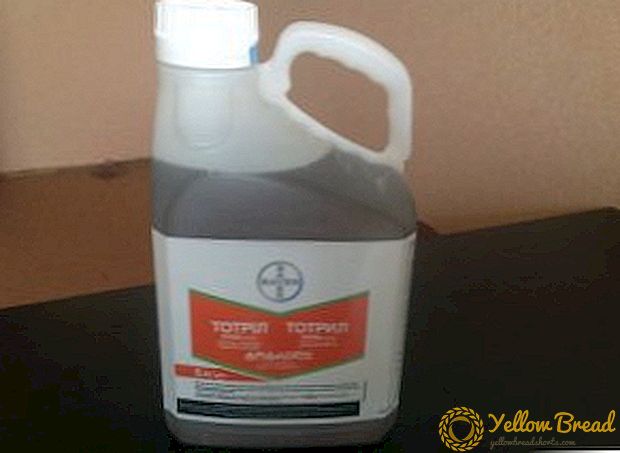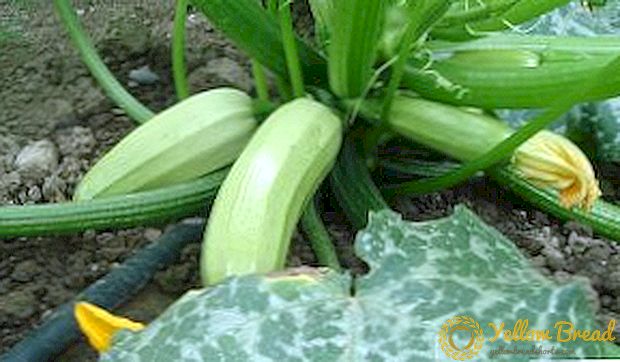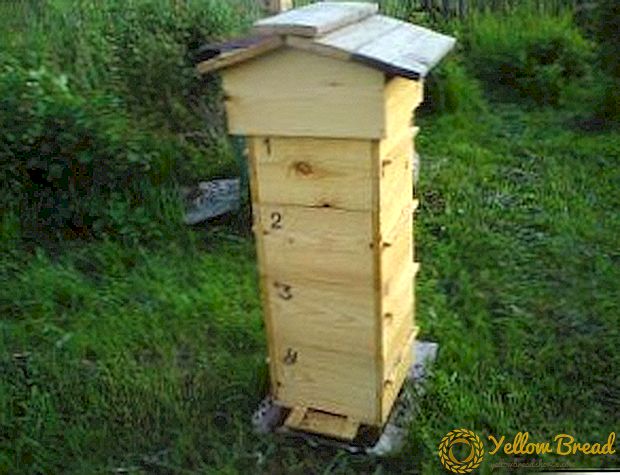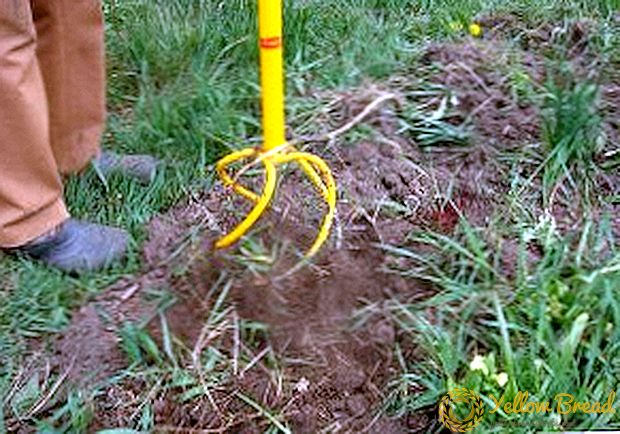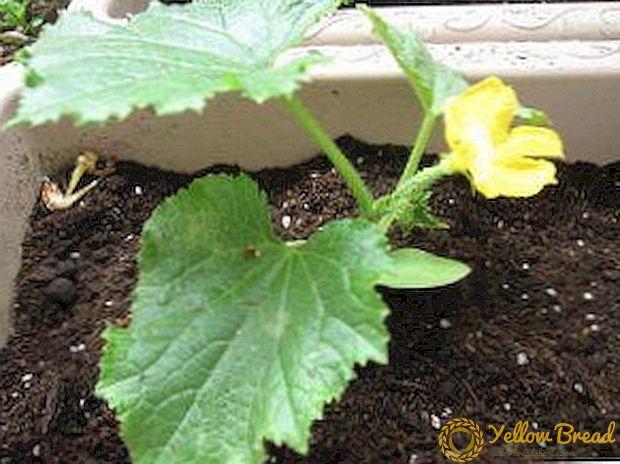
Early tomatoes will compensate for the lack of vitamins and diversify the menu. Among the suitable varieties - tomato "Little Red Riding Hood" (Rotkapphen).
Tomatoes can be planted in a greenhouse, greenhouse or open ground, compact bushes feel good in the balcony pots and vases.
Tomato "Little Red Riding Hood": description of the variety
"Little Red Riding Hood" - early ripe high-yielding grade. Bush determinant, height of an adult plant does not exceed 70 cm. Plant stems are sturdy and thick, not requiring tying to the support. The formation of green mass is moderate, the leaves are dark green, medium-sized. Fruits ripen with brushes of 3-5 pieces. Yield the goodcan be removed from one bush up to 2 kg selected tomatoes.
As you can see in the photo tomatoes "Little Red Riding Hood" - medium size, mass 60-70 g, smooth and neat. The shape is flat-rounded, with a slight ribbing at the fruit stem. The color of ripe tomatoes is bright red-orange. The flesh is juicy, moderately dense, with a small number of seeds, the skin is thin, tender.Taste is pleasant, sweet, not watery, with barely noticeable sourness.
A photo
See photo of tomato "Little Red Riding Hood" below:





Origin and Application
Tomatoes "Little Red Riding Hood" - grade German selection, zoned for areas with a temperate climate. Recommended cultivation in greenhouse or greenhouse, in open ground, yields significantly below. Plants tolerate a short-term drop in temperature.
Miniature bushes can be planted in vases and containers for placement on balconies, verandas, window sills. Yield the good, the collected fruit can be long keep and to transport.
Variety Tomatoes "Little Red Riding Hood" are considered salad, they are delicious fresh, suitable for cooking soups, sauces, mashed potatoes, juices. Homemade ketchups, pastes and other products can be made from ripe fruits. For whole canning variety does not fit, thin skin is prone to cracking.
Advantages and disadvantages
 Among the main merits varieties:
Among the main merits varieties:
- high taste of fruits;
- good yield;
- disease resistance;
- compact bushes do not take up much space in the garden;
- cold resistance;
- no scrub formation is required.
Deficiencies in the variety not seen. To increase the yields are recommended abundant feeding and moderate watering.
Features of growing
Like most tomatoes, a variety of tomatoes "Little Red Riding Hood" it is more convenient to grow rassadny way. The best germination give seeds collected 2-3 years ago. Before landing they can dunk in the growth promoter. Some gardeners prefer freshly squeezed aloe juice, well firming plant immunity.
Variety Tomatoes "Little Red Riding Hood" sown in the second half of March or early April.
For seedlings need easy nutritious soil from a mixture of garden or turf land with humus. A little washed river sand is added to the substrate; a portion of wood ash or superphosphate will not interfere either. Seedlings are sown in containers or peat pots, seeds are planted with a depth of 1-1.5 cm. When using individual pots you can do without the subsequent picks.
For successful sprouting seedlings need temperature from 23 to 25 degrees. After germination, it is lowered to 16-17 degrees for 5-7 days. Then the temperature raise to normal room.
This procedure strengthens plants and does not allow them to move in growth ahead of time. Watering seedlings moderately, warm defended water, using a watering can or spray.
 When the first pair of true leaves unfolds on the seedlings, its dive in separate pots. Young tomatoes are recommended to feed the liquid complex fertilizer.
When the first pair of true leaves unfolds on the seedlings, its dive in separate pots. Young tomatoes are recommended to feed the liquid complex fertilizer.
A week before landing they start tempertaking out to fresh air.
Transplant to the greenhouse begins from the second half of May. The soil is thoroughly loosened and mixed with humus. On 1 square. m place 3-4 bush. Tie them up not necessary, for better insolation, it is recommended to remove extra leaves.
Watering infrequentbut abundantas the topsoil dries. During the season the plants are fed 3-4 times mineral fertilizers. Before the start of flowering, nitrogen-based complexes are introduced; after the formation of ovaries, it is worth feeding the tomatoes with magnesium sulfate.
Use of foliar nutrition, for example, abundant spraying with an aqueous solution of superphosphate.
Diseases and pests
Sort steady to main diseases, but preventive measures do not interfere. Before planting the seeds, the soil is calcined in the oven or spilled with a hot solution of potassium permanganate. In the greenhouse, the top layer of soil is replaced annually.
Ideal tomato precursors: legumes, carrots, lettuce, cabbage, spicy herbs. Turnover of crops will protect tomatoes from diseases and significantly will boost yield Recommended preventive spraying plantings with phytosporin or other non-toxic bio-drug.
Early ripe varieties seldom affected by blight. But in case of an epidemic, med-containing preparations will be used, with which plantings are plentifully processed. Frequent airing of the greenhouse, timely removal of weeds, and mulching of the soil with peat, humus or straw save the fungal diseases.
 In the greenhouse, tomatoes are threatened by aphids, spider mites, whitefly and thrips. To get rid of flying insects, you can use industrial insecticides, plants are sprayed with them 2-3 times with an interval of several days.
In the greenhouse, tomatoes are threatened by aphids, spider mites, whitefly and thrips. To get rid of flying insects, you can use industrial insecticides, plants are sprayed with them 2-3 times with an interval of several days.
After fruit set Toxic drugs are replaced by plant: decoction of celandine, yarrow, chamomile or onion peel.
Destroy the slugs can be an aqueous solution of ammonia, aphyl wash off with warm soapy water.
Learning Tomato Description "Little Red Riding Hood"can say that it is interesting and original varietywhich is worth growing in the garden or on the balcony.
Mini bushes hung with red tomatoes look like smartly and almost do not require care. Having given them a minimum of attention, you can enjoy fresh tomatoes already at the beginning of summer.

